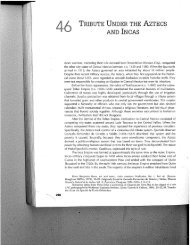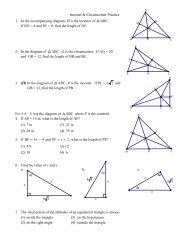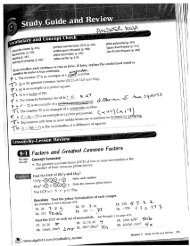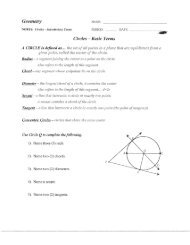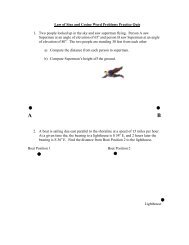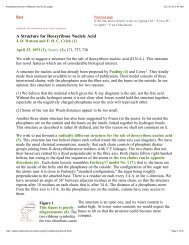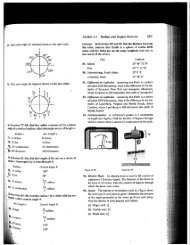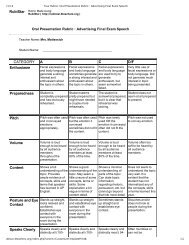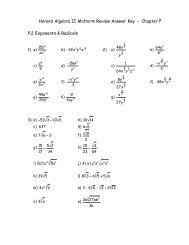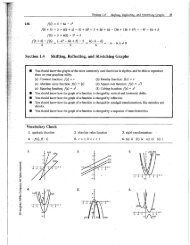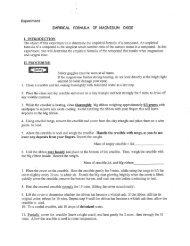Answer the following questions in your own words while thinking ...
Answer the following questions in your own words while thinking ...
Answer the following questions in your own words while thinking ...
- No tags were found...
Create successful ePaper yourself
Turn your PDF publications into a flip-book with our unique Google optimized e-Paper software.
Mov<strong>in</strong>g Man - V~locity vs. Time GraphsStudent PagesBackground - Remember graphs are not just an evil th<strong>in</strong>g <strong>your</strong> teacher makes you create, <strong>the</strong>y are a meansof communication. Graphs are a way of communicat<strong>in</strong>g by us<strong>in</strong>g pictures and s<strong>in</strong>ce a picture is worth a thousand<strong>words</strong> know<strong>in</strong>g how to make and <strong>in</strong>terpret graphs will save you a lot of writ<strong>in</strong>g. (~Learn<strong>in</strong>g Goals = The stadents will:Develop a general kqowledge of "Ve!ocity vs. Time" graphs and"Distance vs. Time":graph~o What graphs of a person stand<strong>in</strong>g stil! would look likeo What graphs of a person mov<strong>in</strong>g away from an observer ata constant speed would look like.o What graphs ofaperson mov<strong>in</strong>g towards an observer at aconstant speed would look like.~ o How differences <strong>in</strong> speed appear on <strong>the</strong> graphsProcedure - Do tile <strong>follow<strong>in</strong>g</strong> activity us<strong>in</strong>g this web sitehttp://www.colorado.edu/physics!pheVsimulations-base.htmlThen click on "The Mov<strong>in</strong>g Man"Screen 11. Gett<strong>in</strong>g started. After~"The Mov<strong>in</strong>g Man" is open leave <strong>the</strong> position graph and <strong>the</strong> velocity graphopen but close <strong>the</strong> acceleration graph. Your screen should look like screen 1.2. Mak<strong>in</strong>g observations. By ei<strong>the</strong>r click<strong>in</strong>g on <strong>the</strong> man or <strong>the</strong> slider cause <strong>the</strong> man to move back andforth and observe what shows up on <strong>the</strong> graphs. Us<strong>in</strong>g <strong>the</strong> axis provided below make sketches ofDistance vs. Time and Velocity vs. Time graphs for <strong>the</strong> actions described next to each axis.A man mov<strong>in</strong>g from 0to !0 at a slow steadypace.-i0 -I0C~)A man mov<strong>in</strong>g from 0to 10 at a fast pace.~5... (s)~-5 ~-5-10 -10(s)A man stand<strong>in</strong>g still at1o~-5-i0



